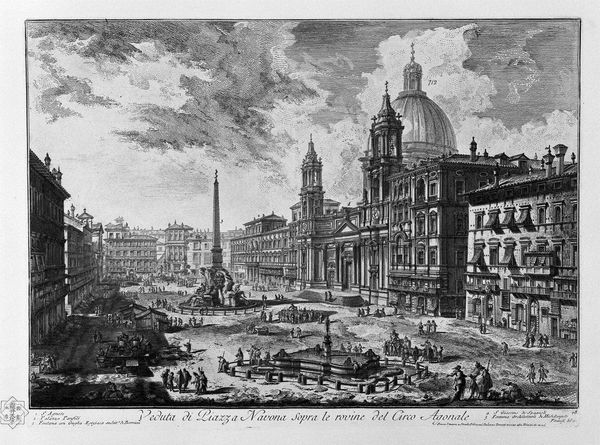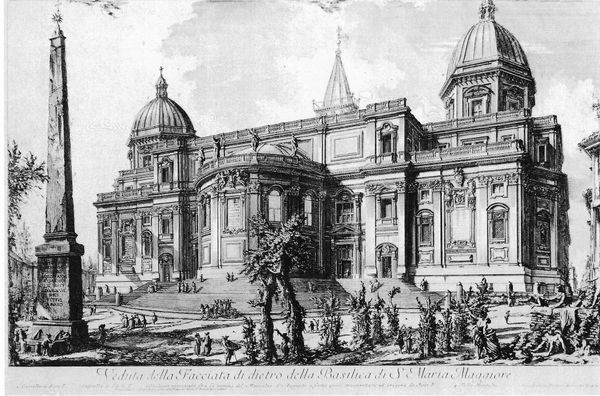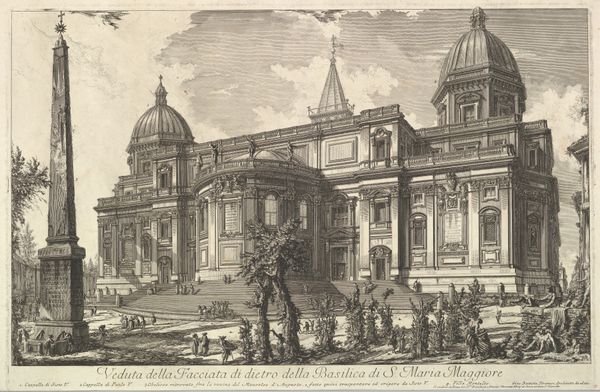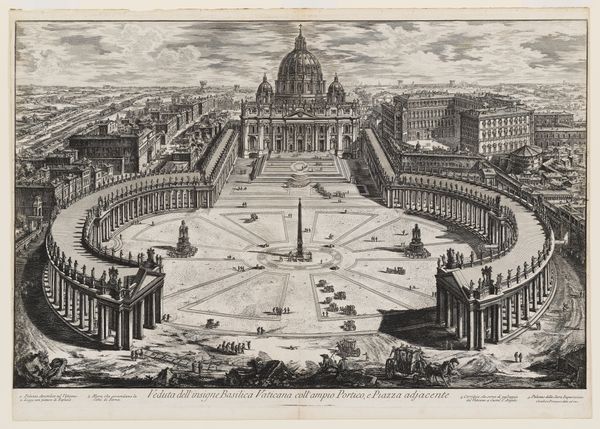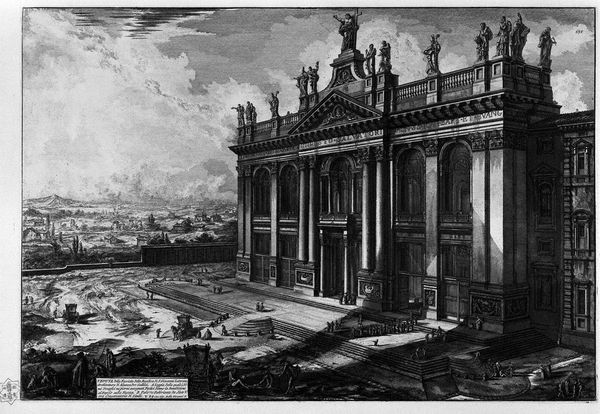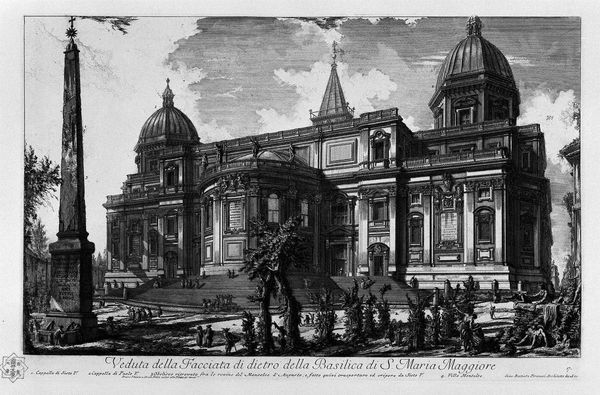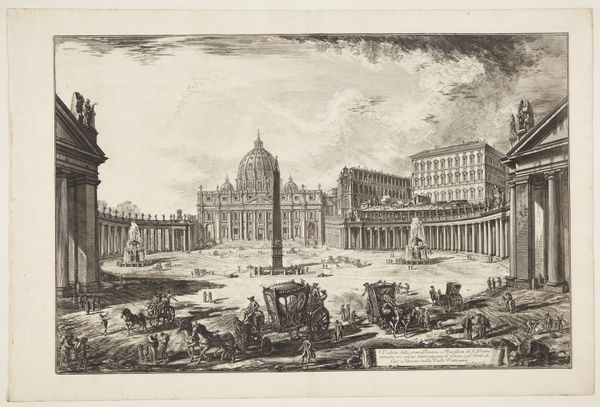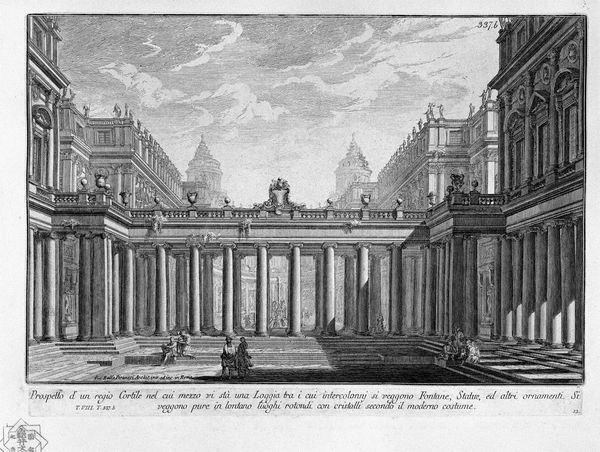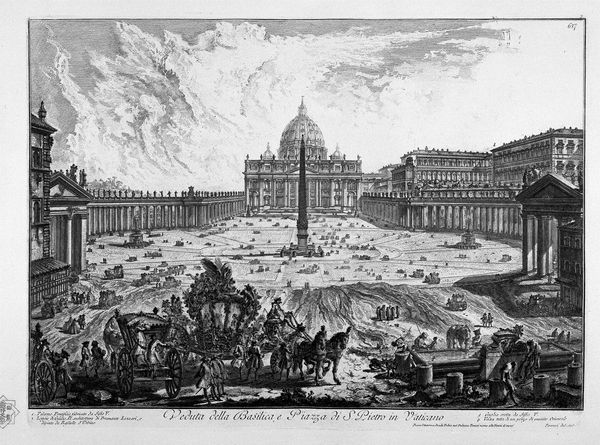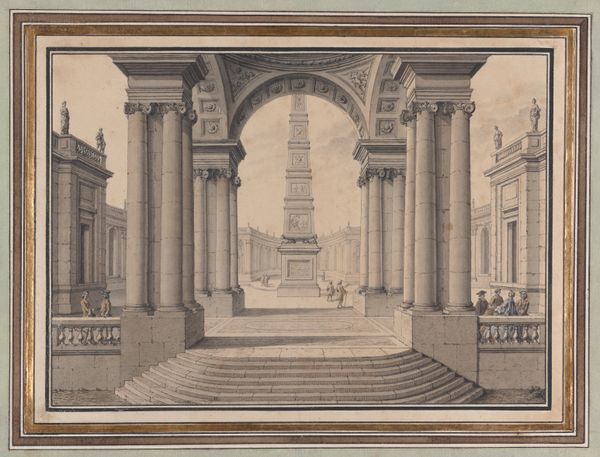
painting, oil-paint, architecture
#
architectural landscape
#
baroque
#
painting
#
oil-paint
#
sculpture
#
landscape
#
intimism
#
cityscape
#
genre-painting
#
architecture
#
statue
Dimensions: 140 cm (height) x 190 cm (width) (Netto)
Editor: So, this is Bartholomeus van Bassen’s “Square in front of a Magnificent Church,” painted in 1623 using oil. What immediately strikes me is how the imposing architecture dwarfs the figures populating the scene. What's your perspective on this, from a materialist point of view? Curator: For me, the real story lies in the very materiality of the paint itself. Look at how van Bassen meticulously renders each stone, each brick. This isn’t just representation; it's a display of skill, of labor. And consider the societal function of that labor: glorifying religious institutions through painstakingly crafted images of their architectural power. Don't you find that fascinating? Editor: I do. It’s like the sheer effort put into creating the image reinforces the grandeur it depicts. But, how does the context influence the choice of these materials and their applications? Curator: Precisely! Oil paint itself, still relatively new at the time, allowed for this incredibly detailed, almost photographic realism. That precision speaks to the emerging power of observation and control—human control over both the natural world, as represented in the perspective, and the very materials used to depict it. It shows a shift towards a world increasingly shaped by human labor and ingenuity. What about the pigment – consider its sources and costs? Editor: Interesting. I never really considered the economic implications behind the colours used. Now that I look closer, this gray-scale world may have less to do with tone, but instead function as another economic expression related to cost and procurement. Curator: Exactly. Considering art making this way unveils a lot about 17th-century society, wouldn’t you say? Editor: I would! I learned a lot. I now feel like I can assess art with a different and improved mindset.
Comments
No comments
Be the first to comment and join the conversation on the ultimate creative platform.
